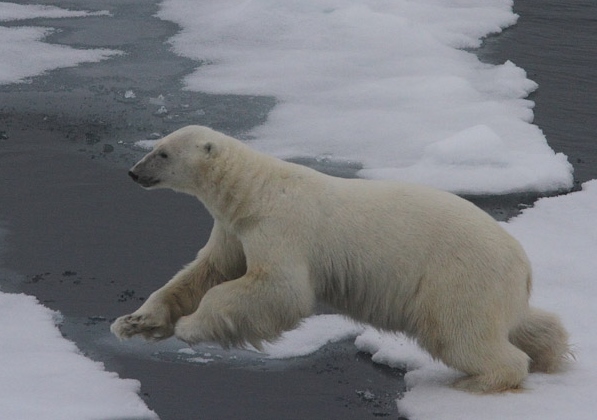
Part One
This is part two of Svalbard Polar Bears. If you have not read part one, it is here
Day seven, Svalbard Polar Bears and more Bears
The ship anchored off White Island, at the northern tip of Svalbard, which is closer to Russia than mainland Norway. No landing, but bears were sighted on a zodiac trip. Some waves came over the sides of the zodiac, and everyone got drenched. If you go on this trip, bring a good-quality rain suit and some type of protection for your camera. One wave filled the pocket of Sarah’s parka and ruined her little point-and-shoot camera. The highlight was the large number of walruses in the water, quite close.
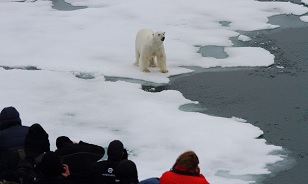

The next landing in Storoya was abandoned because of the wind and waves. As people were going to their cabins for the night, a bear was sighted very close to the ship. The passengers spent a whole hour with this bear from 11 a.m. to 12 p.m. as it ambled along over the ice pack, very close to the ship, leaping between ice flows with ease. (Notice that it is still daylight at midnight.)

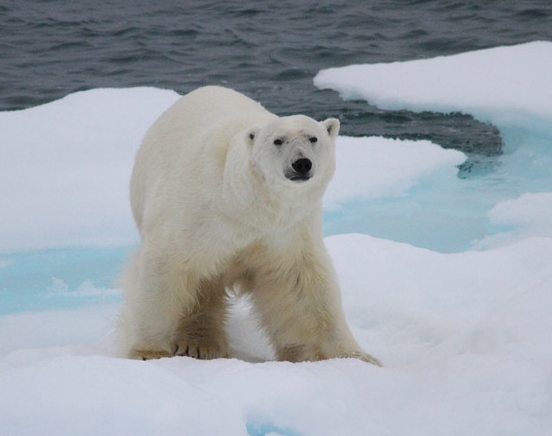
12:30 a.m. Once we had undressed and got ourselves ready for bed, David felt that he had to have one last look out the cabin window, and so it was at half past midnight that they had their very own cabin bear.
Day eight, Five more Bears
There was light snow. We saw another five bears, but they were too far away for good photos. Our most northerly point was reached today: 80 degrees, 40 minutes north. We travelled through pack ice all day.
Day nine, Whales, a damp and misty day
Went ashore at Kinnvika. Saw Arctic Fox, Reindeer (called Caribou in North America), Snow Bunting, Common Eider, Atlantic Puffin, Barnacle Goose and Arctic Skua. Back on the ship after lunch, we sighted two humpback whales; a close, excellent sighting. A little while later, we saw two Fin Whales and a Minke Whale. Later, we took another cruise in the zodiac among hundreds of Brunnich’s Guillemots.
Day ten, Little Auks and Puffins, overcast and windy
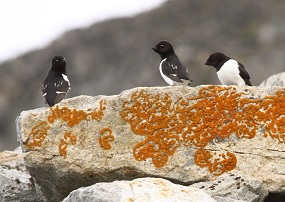

“Yet another shore trip in the zodiac to see Little Auks was cancelled. Later in the day at Magdalene Fjord, there was calm wind, and finally, we went out to look for the Auks. There is a Little Auk colony here, but it is not possible to land on the rocky shore. However, we did see the auks finally, from the zodiac, along with guillemots, gulls and terns. After lunch, we landed at Gravneset and went for a walk. We saw Atlantic Puffin, Arctic Skua, Common Eider and Snow Buntings. Later in the afternoon, the ship came alongside the Waggonwaybreen glacier. We had a nice end to the day watching the glacier and kittiwakes and fulmars.” (The Little Auk is known in North America as Dovekie. They live only in the high Arctic).
“In late afternoon/early evening, the Captain brought the ship right up to the face of the Waggonwaybreen Glacier for closer viewing of the ice, and dinner was a barbecue on deck! A very nice way to end the day.”
Day 11, our final day, blue sky and warm temp
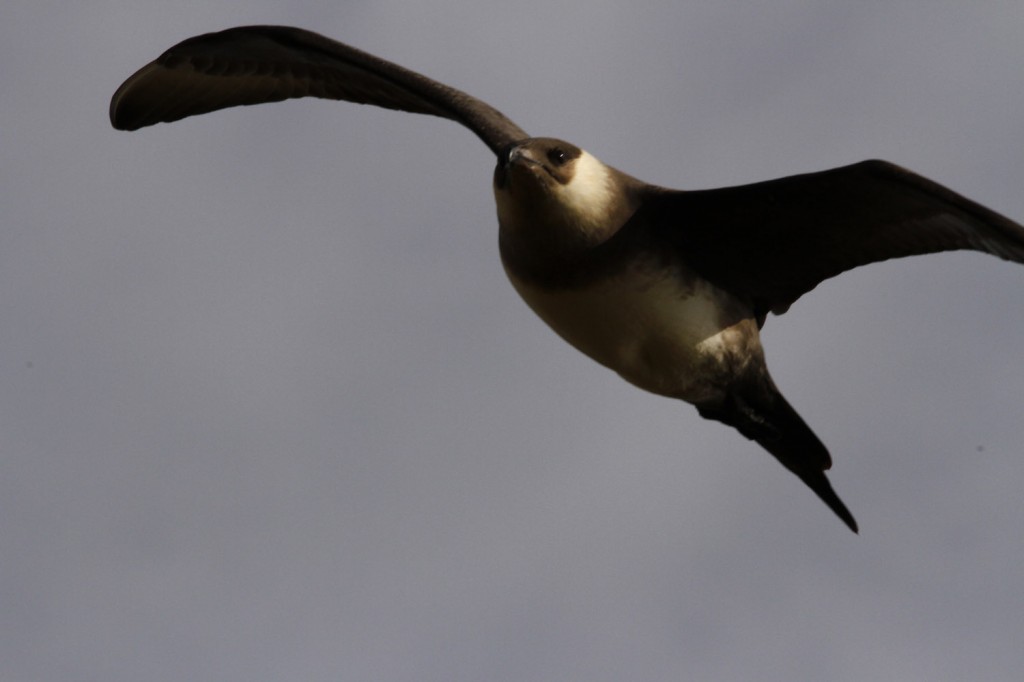
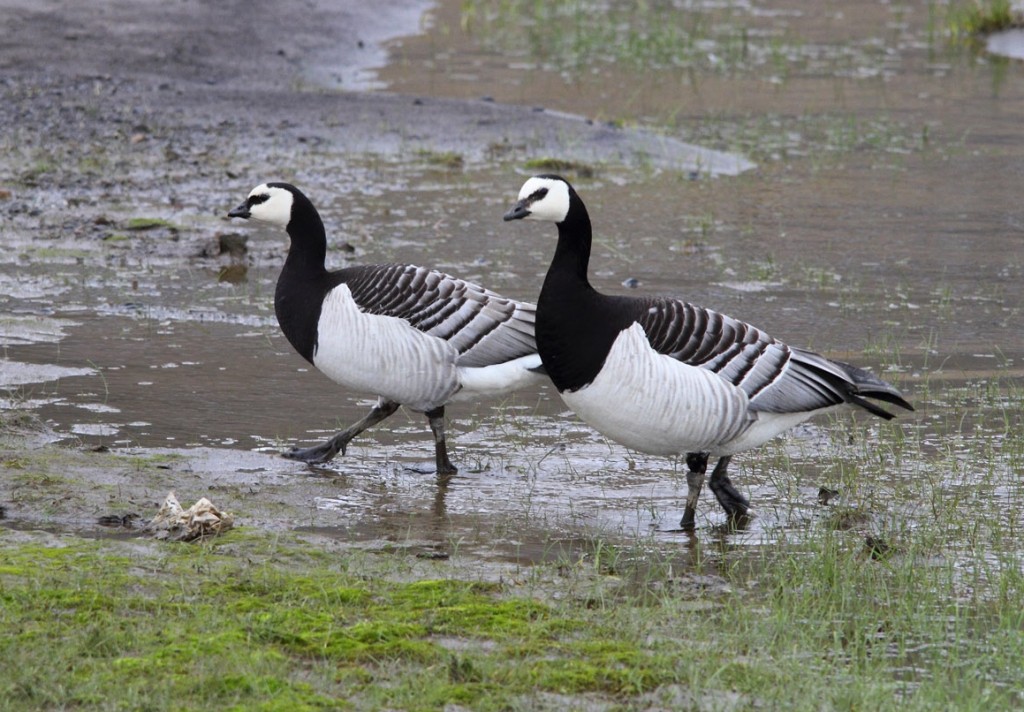

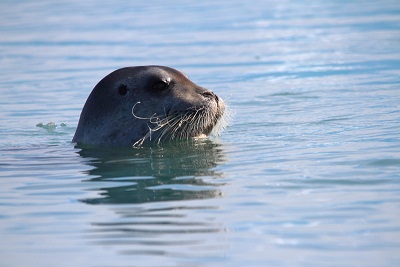
“From the ship we saw King Eider, Pink Footed Geese and Barnacle Geese. We landed at Alkhornet and went for a scenic tundra walk. We saw Arctic Fox, Reindeer and an aggressive Arctic Skua who attacked both people and reindeer. In the afternoon, we went on a zodiac trip along the impressive Sveabreen glacier which is two miles across the face. We had a nice view of a Bearded Seal soaking up the sun on some ice.”
Day twelve, back at Longyearbyen.
Back at Longyearbyen and the flight to Oslo.
Story and photographs courtesy of David and Sarah Blair
International Bird Names
As I travel the world, I notice that the same birds have different names in different countries. For example, the Great Egret is known in New Zealand as the Great White Heron. Sometimes, a bird is named only with its family name, such as Kingfisher, when there are several different kinds but only one species in that particular country. For those of you in North America and elsewhere, here is a translation of some of the bird names used in this story. It depends on which checklist one uses, and there are several. Birders and Guidebooks in North America tend to use the American Birding Association and the American Ornithological Union checklists. The IOU is an international list. Ebird uses the Clements list. This can be confusing. It is like using Celsius and Fahrenheit. I wish the world would get together and use just one system.
Puffin = Atlantic Puffin
Diver = Red-throated Loon
Brunnich’s Gillemot = Thick-billed Murre
Little Auk = Dovekie
Fulmar = Northern Fulmar
Kittiwake = Black-legged Kittiwake